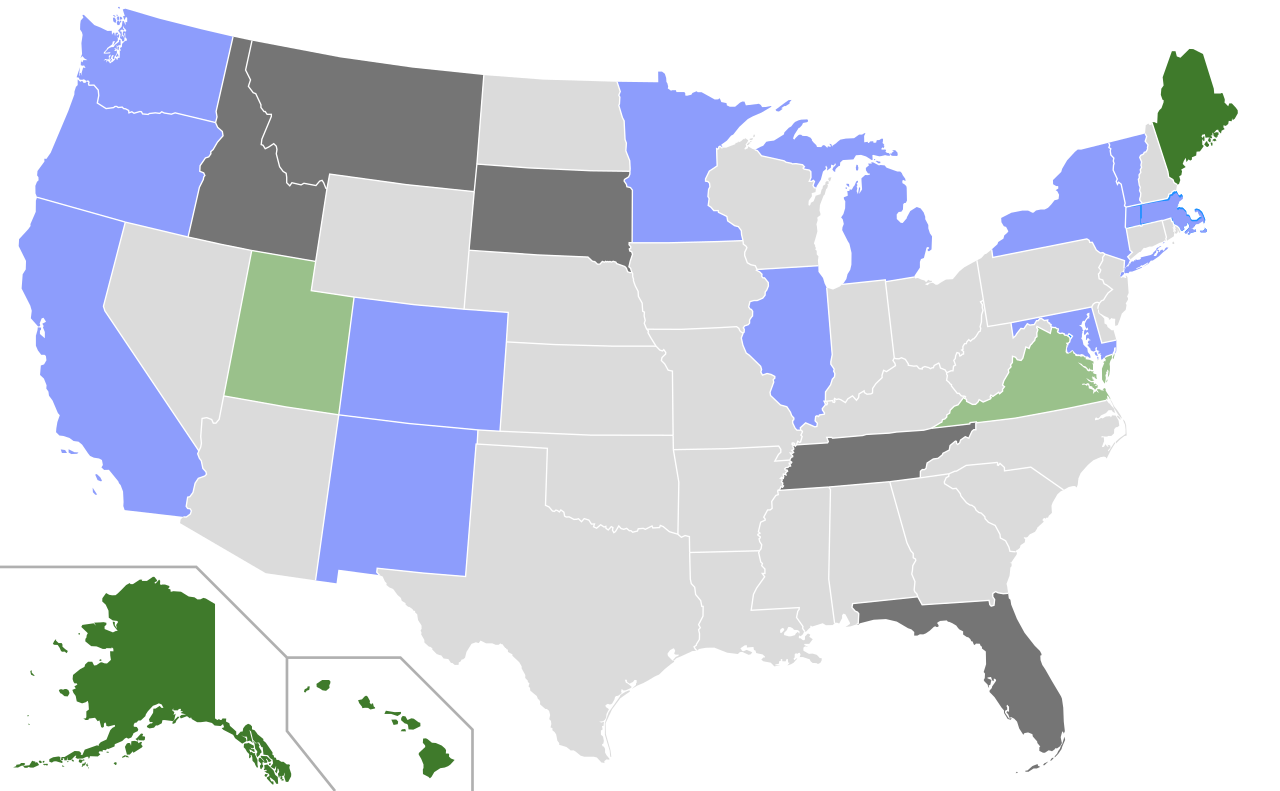How Ranked-Choice Voting Can Save Our Democracy
By Dave Heller, Special to The Kennedy Beacon
“Close to two-thirds of American voters say they want an alternative to the two-party candidates. I’m now independent of two-party politics but still dependent on one thing: the American people.”
– Robert F. Kennedy, Jr.
After working vigorously on Ralph Nader’s campaign in 2000, I was bombarded with accusations that Nader had “spoiled” the election for Al Gore, putting George Bush in office. So I immediately began advocating for something called ranked-choice voting (RCV) in California.
RCV is a very eloquent and democratic process that empowers voters to rank their choices in an election. After all the first-choice votes are counted, if no candidate has over 50% of the vote, the candidate with the least number of votes is eliminated and that candidate’s voters’ second choices are counted instead of their first choices. If, after this count, no candidate has a majority, the process is continued until a candidate has over 50% of the vote.
This helpful video from FairVote makes the RCV process easier to understand.
In California, local chapters of the state’s League of Women Voters joined Green Party members and others to pass RCV in San Francisco in March 2002 with 55.5% of the vote. In 2004, I was the campaign coordinator for an RCV measure in Berkeley, which we won with 72.3%. Since 2016, I have been working to pass RCV in New York state, cofounding RankedChoiceNY.org in 2018.
In the US, RCV is currently used in over 50 cities, including New York City and San Francisco, and statewide in two states, Alaska and Maine. Unfortunately, because the use of RCV has not been adopted in 48 states for federal elections, once again, most voters will be pressured to vote for the presidential candidate more likely to beat the candidate they hate the most.
Although Robert F. Kennedy Jr. has not spoken out in support of RCV insofar as I know, it is consistent with his vision of democracy, wherein people have more power and parties have less. Kennedy’s decision to make an independent run – for which he needs people on the street collecting signatures to get him on the ballot and not party superdelegates voting for him at the convention – if successful, could trigger a new era in effective populism. RCV, independent runs, referendums, recalls, write-in efforts, and citizen grand juries are all part of the possible populist toolkit that have long gone underutilized.
RCV saves tax dollars. San Francisco has done away with party primaries for local elections; instead there is one general election in which all candidates on the ballot are ranked. Eschewing primaries saves the city millions of dollars every year. RCV is also known as “instant run-off voting” because it serves the purpose of settling close races between more than two candidates, narrowing the field down until the most favored candidate is elected. Holding one election using this method and abandoning primaries also diminishes the power of party bosses to select the party’s nominee.
Current poll numbers show that President Biden’s approval rating, according to Gallup, is in the dumpster at 39%, the lowest ranking for the last seven presidents, and his disapproval rating is at 53%, according to a recent Reuters report. Trump is about the same, at 42% approval and 53% disapproval.
A recent Quinnipiac Poll has Biden at 38%, Trump at 36%, and Kennedy at 22%. Even though Kennedy might easily reach 30+% by November, the idea that he would be a mere “spoiler” and not a viable candidate won’t go away as long as we have “winner take all” elections, which is a type of election process that inevitably leads to a system dominated by two parties.
Every election, as the fear of a “spoiler” grows, interest in RCV increases and voters wish that the RCV option were already in place. After the election of the “lesser-evil candidate,” the need for RCV is forgotten until the next election. But, even though we’re less than a year from the 2024 presidential election, it’s never too late to start working hard to get RCV passed in your state. The next election will be just as important as this one.
There are three candidates outside of the duopoly who will be on most, if not all, state ballots in 2024: independent candidate Robert F. Kennedy Jr., Green Party candidate Jill Stein, and the Libertarian Party candidate, who will be selected in May (probably either Michael Rectenwald or Chase Oliver).
Cornel West (independent) is also running but is not likely to seek ballot access in swing states, where he might draw votes away from the Democrat candidate. It has been conjectured that Dr. West left the Green Party because of its ballot status in swing states, and he apparently does not want to be blamed as a “spoiler” for the Democrats like Ralph Nader was. But to this, I say that the only way to challenge the status quo is to actually threaten the outcome. Dr. West could force the Democrats to change their policies or lose votes. There is little point in running an anemic campaign only in “safe” states. The Fat Cats in the Democratic Party know they can take large numbers of their constituents for granted, and that is the problem.
Which States Use RCV Now?
Presently, there are two states, Maine (with four electoral votes) and Alaska (with three) that will use RCV in the 2024 presidential election. Voters in these states will be free to vote for the candidates they prefer without worrying that they are spoiling it for their second choice.
Nevada (with six electoral votes) has voted yes once on a state referendum to get statewide RCV, but Nevada’s constitution requires two consecutive yes votes on an initiative to make it state law. RCV is on Nevada’s ballot for the November general election in 2024, so it will almost certainly be the next state to embrace this much-needed reform – although, sadly, too late for the 2024 election.

In 2024, RCV will be on the ballot in Oregon (with eight electoral votes) for use in presidential elections (and all other statewide contests starting in 2028). A similar ballot measure (including future presidential elections) will likely be decided in DC, and we may see one in Colorado (which has 10 electoral votes). Minnesota could potentially approve RCV soon because it has a substantial population that’s used RCV for quite some time and has certified software. Although RCV has been in use in San Francisco since 2004, for the entire state of California to adopt its use a state proposition needs to be voted on, and such a proposition couldn’t be considered until November 2024.
All electronic voting machines these days should have the capacity to count RCV votes, although I’m not sure if all of them can run on the open source software from RCV Resource Center, the preferred choice. Some machines used in some states require proprietary software from the manufacturer (which creates a real “black box” problem). So any state adopting RCV would likely also want to upgrade to open source software, which can be inspected by the public, for their vote-counting machines. Adopting open source software might help eliminate the threat of election fraud.
FairVote, an organization that promotes RCV and tracks ballot measures and state legislation on its website, may provide further updates in 2024 as the year progresses.
Could More Than Two States Use RCV in 2024?
In theory, if not in reality, New York (with 28 electoral votes) could adopt RCV statewide for the next election because it only needs legislative passage (it would become law with a two-thirds supermajority of the Assembly and Senate to override a governor’s veto, but that requires another vote in both houses). If made law – because the New York Board of Elections has already certified the open source software needed to quickly and transparently count RCV ballots in NYC – New York state could be ready for November 2024.
But then there would be the issue of voter education, which would be required before a 2024 rollout, even if legislation were passed. Nearly half of the New York population (NYC) has experience with RCV because it was used during the last NYC mayoral primary. New Yorkers who have used RCV are enthusiastic about it. According to Fairvote, in the 2021 mayoral election, “87% of voters ranked multiple candidates and 46% of voters used all five ranking spots on their ballot.”
However, voters who turn out for local elections such as a mayoral primary race tend to be more election literate than the substantially larger population that pays attention to only the federal general election. A statewide rollout in New York in November 2024 would require a very broad RCV education effort. There are 62 counties in New York state, five of which are within New York City, so 57 counties would need to educate voters on RCV, upgrade and test the election hardware, and run RCV education programs. These would be difficult tasks, but not entirely out of the realm of possibility.
The Time Is Now
Certainly the writing is all over the walls, train cars, and billboards that the electorate wants a choice outside the duopoly. If more people knew about RCV, how it works and how it could change the game – and how the Ds and Rs have been stonewalling it all over the place – I think there would be a groundswell of demand for its implementation.
In my opinion, we need to implement ranked-choice voting in all of our elections asap. One can think of voting as a citizen’s most powerful form of speech, because it is how a person directly plays a role in determining the direction the government takes.
With RankedChoiceNY, Dave Heller has been working with the NY League of Women Voters to pass RCV statewide in New York. He also ran for California Congress on the Green Party line against Barbara Lee in 2010.





NOOOOO!!!!!!! In America we must pick one candidate to vote for and live with that choice, whether it's a winner or a loser. There's way too much fraud institutionalized in the election process already without introducing another layer, or two , or three, .... into the accounting process.
This is one issue that will cement my voting decision. NO! NO WAY! The idea may sound good and democratic and nice, but it results in the weakest condidate winning thereby helping the bad guys further their agenda. It is part of the communist agenda.